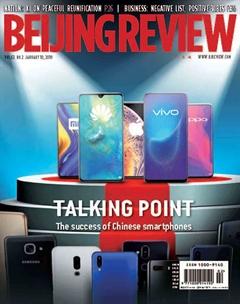Key Terms to Understand Reform and Opening Up
The China Academy of Translation has analyzed prevailing terms concerning the reform and opening-up policy and translated them into a number of foreign languages. The research institute is affiliated with the China International Publishing Group, the countrys leading international publisher. In each issue, Beijing Review presents a selection of these keywords to help readers more deeply understand this program.
‘Green Mountains are Gold Mountains
Xi Jinping first likened green mountains to gold mountains in 2005 when he was secretary of the Zhejiang Provincial Party Committee. Since the 18th National Congress of the Communist Party of China (CPC), he has on multiple occasions reiterated this idea. While visiting Kazakhstan in 2013, he said, “We want to have not only mountains of gold, but also mountains of green. If we must choose between the two, we would rather have the green than the gold. And in any case, green mountains are themselves gold mountains.”
This metaphor reflects a people-centered approach to peoples wellbeing, an approach that emphasizes the importance of harmony between man and nature, and embodies the unwavering resolve of the Party and the government to preserve and protect the natural environment. It also represents a fundamental shift in our development strategies, requiring respect and protection for nature in our development efforts. Resource conservation and environmental protection have thus been incorporated into our basic national policy, along with economic, political, cultural and social development.
The goal is to place China on a path to green development, so as to build a beautiful China. The 19th CPC National Congress called on the Party to regard clear waters and green mountains as invaluable assets and act on this understanding.
Building a Beautiful China
A beautiful environment is beneficial to the people and the future of the nation. The report to the 18th National Congress called for hard work to build a beautiful country, and achieve lasting and sustainable development of the Chinese nation. The report to the 19th CPC National Congress proposed speeding up reform of the system for developing an ecological civilization and building a beautiful China.
Building a beautiful China is an important part of the Chinese Dream. It calls for respecting, protecting and being in harmony with nature, based on the understanding that“lucid waters and lush mountains are invaluable assets.” China should implement its key national policy on resource conservation, environmental protection, and promotion of green, circular and low-carbon development.
The initiative underscores the need to leave more space for nature to renew itself, to keep more land for cultivation, and to bequeath a better working and living environment to future generations so that they can be blessed with a blue sky, green fi elds and clean water.
The Chinese Dream will not be realized at the expense of the environment. Economic development should be accompanied by strong measures to protect the environment. Building a beautiful China will be of benefit to the countrys long-term development, to promoting sustainable global development, and to fulfi lling the universal dream of protecting our beautiful earth.
According to Chinas two-stage development plan, the basic elements of a beautiful China will be in place by 2035.
Promoting Innovative Transformation & Development of Traditional Chinese Culture
In his report to the 19th CPC National Congress, Xi Jinping called for innovative transformation and development of traditional Chinese culture, pointing the way toward Chinas cultural development.
Innovative transformation involves changing what may be dated but still has relevance, giving it new life to refl ect todays realities and needs. Innovative development means adding new concepts and ideas, expanding and improving what is considered quintessential, and broadening its reach and its appeal to refl ect new progress.
Innovative transformation and development are interrelated. With different focuses, they constitute a continuum. These guidelines are based on the Partys new understanding of what drives cultural development under todays new conditions and will propel Chinese culture to new heights.

